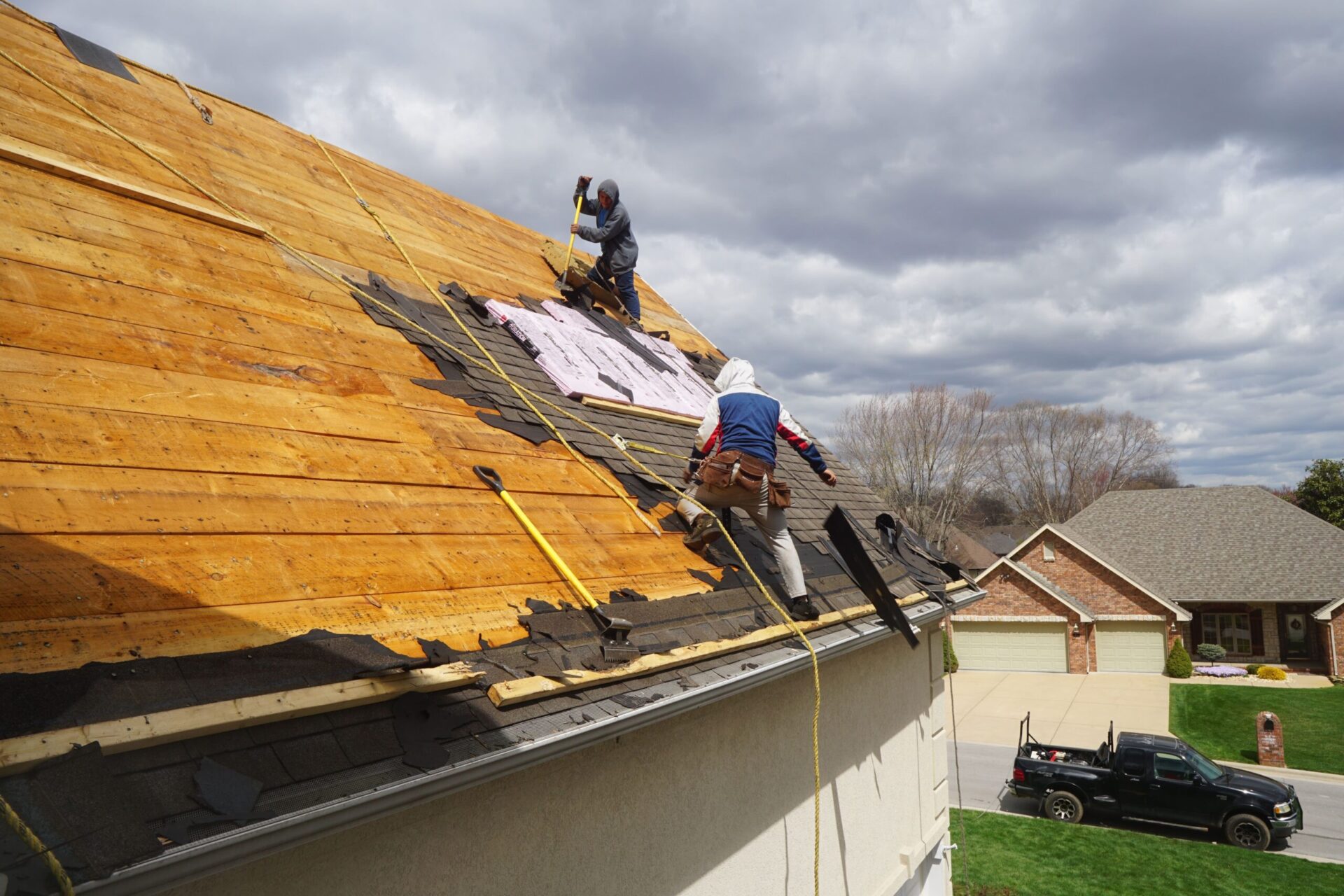
What Are the Reasons and Causes of Roof Leaks in Heavy Rain?
Can heavy rain cause roof leaks?
Your home’s roof is its first line of defense against the elements, shielding it from sun, wind, and rain. However, despite its durability, your roof is not invincible. One of the most prevalent issues homeowners face is roof vent leaks during heavy rain. Leaks can cause significant damage to your home, from water-stained ceilings and walls to serious structural issues if left unaddressed. Understanding the common causes of roof leaks in heavy rain can help you identify potential problems before they escalate and ensure that your home remains dry and secure. These causes can range from worn-out roofing material and damaged shingles to more complex issues like improper roof installation and inadequate attic ventilation. Let’s delve into these potential issues and explore how you can prevent them, maintaining the longevity and integrity of your roof.
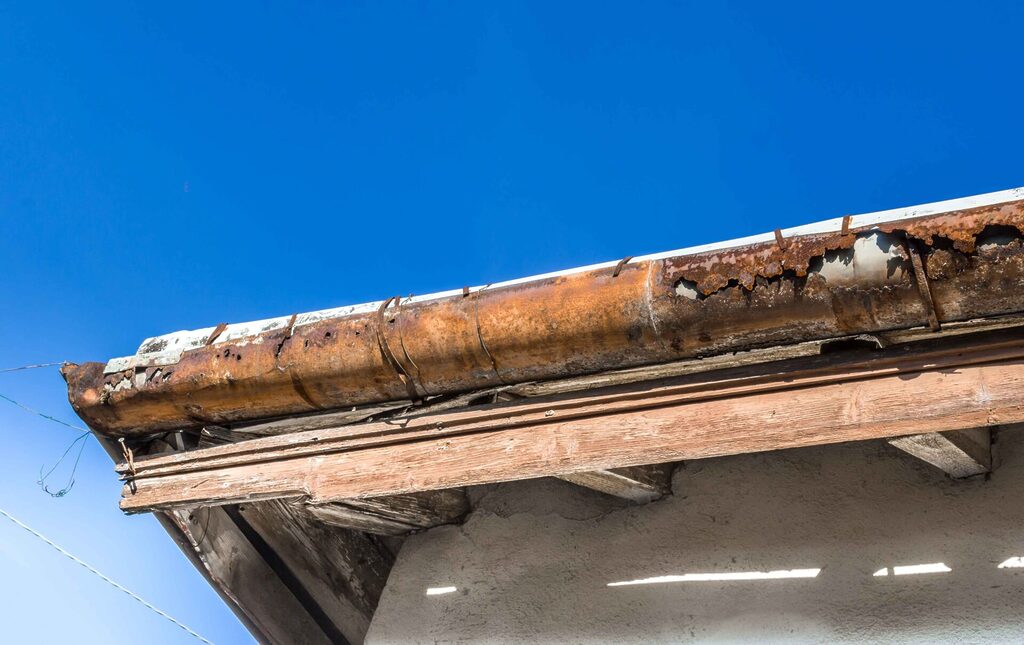
Old and Worn Out Roofing Material
The durability and life expectancy of roofing material can vary greatly depending on what it’s made from. Asphalt shingles, for instance, typically last around 20 to 30 years, while metal roofs can last 40-70 years, and slate or tile roofs can last over 100 years. Regardless of the material, all roofs eventually wear out and lose their ability to keep water out effectively. Over time, they may crack, curl, blister, or lose granules (in the case of asphalt shingles), leaving the underlayment and roof deck exposed to the elements. Prolonged exposure to sunlight can degrade the material, and fluctuating weather conditions can cause expansion and contraction that leads to cracks or loosening. It’s important to have your roof inspected regularly to spot and replace worn out materials before they lead to leaks.
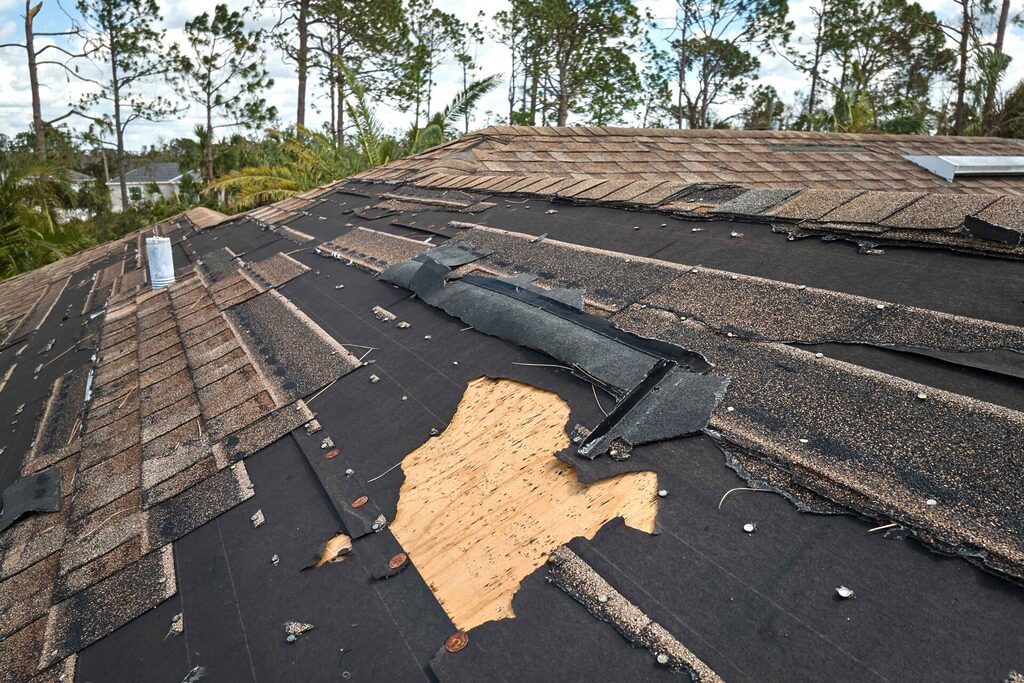
Missing or Damaged Shingles
Shingles act as the outer protective layer for your roof, designed to repel water and shield the inner layers of your roof. They can, however, get damaged or become dislodged. Heavy winds and storms can cause shingles to blow off the roof entirely. Aging can also lead to brittle shingles that crack and break more easily. Even seemingly small damages, like minor cracks or curling at the edges, can provide an entry point for water, especially during heavy rain when the volume and force of water hitting the roof is increased. Regular maintenance can help identify and replace damaged or missing shingles, maintaining the protective layer they provide.
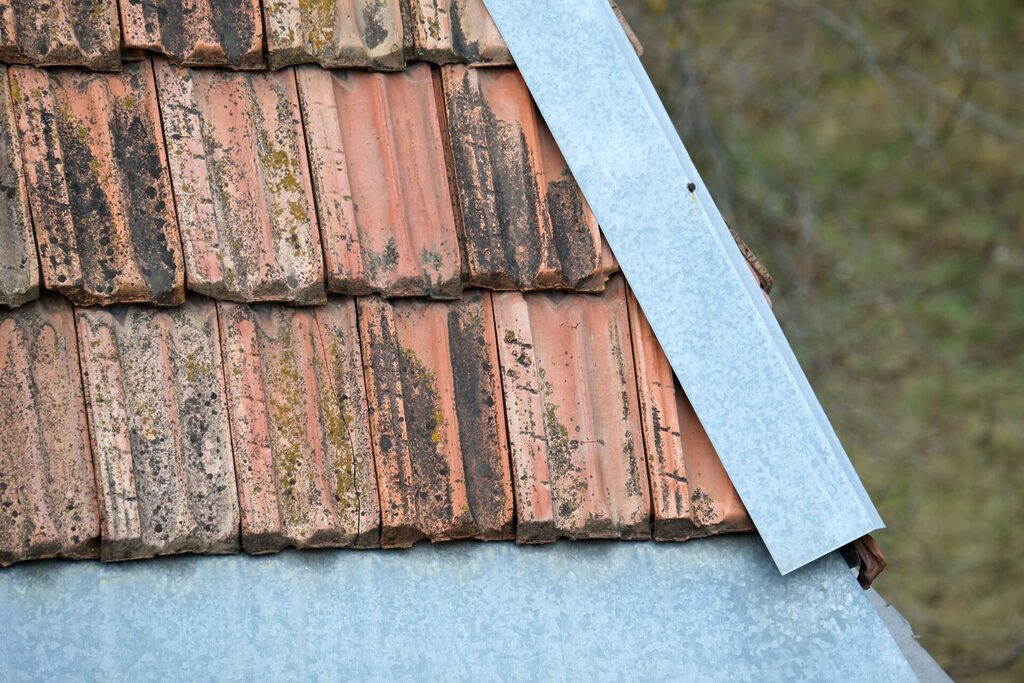
Flashing Damage
Flashings are an essential component of your roof system. They are thin pieces of metal — usually made of aluminum or galvanized steel — that are installed in every area of your roof where two surfaces meet, like chimneys, skylights, vents, or the junction between a roof and a wall. These are the areas most vulnerable to leaks because they are exposed to large amounts of runoff water. Flashings are designed to direct this water away from the seams and towards the gutters. However, if the flashing is damaged, rusted, or poorly installed, it can fail to divert the water properly, allowing it to infiltrate these vulnerable areas and cause a leak. Regular inspections can help spot and rectify damaged or dislodged flashing before it leads to more serious issues.

Skylight or Vent Leaks
Skylights and vents are common features in many homes and, while they serve useful functions, they can be sources of leaks if not properly installed and maintained. These structures are designed to be watertight, but their sealing can deteriorate over time due to the natural aging process, extreme weather conditions, or physical damage. Furthermore, improper installation can leave gaps or can result in faulty sealing, causing potential leak points. Leaks around skylights and vents are usually evident during heavy rain when water is driven against the seals. Regular inspections and timely maintenance can prevent or address such issues, keeping your home dry during heavy rainfall.
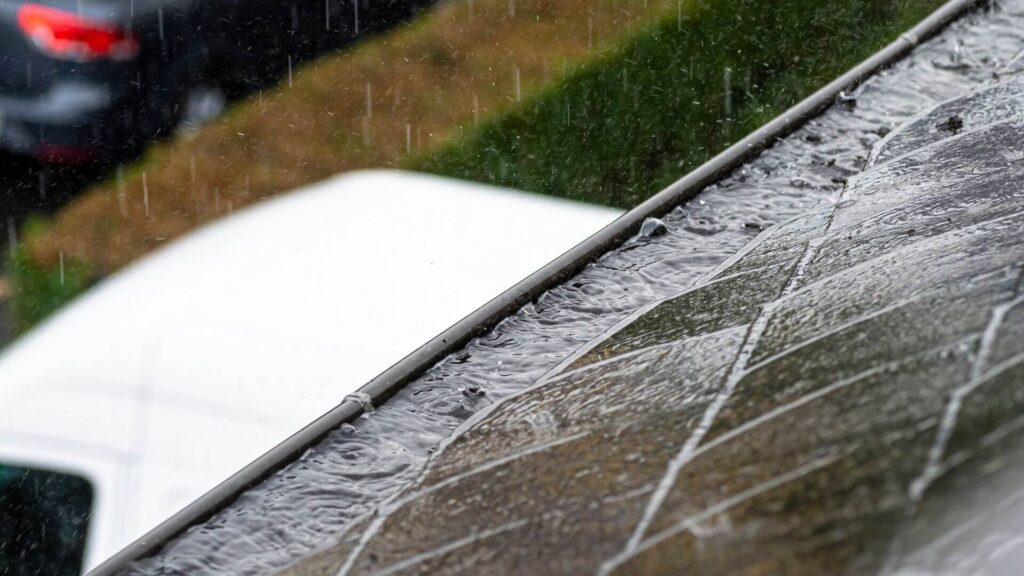
Clogged Gutters
The gutter system is designed to collect water that runs off the roof leak during heavy rain and direct it away from the foundation of the home, preventing water damage to the roof, walls, and basement. However, gutters can easily get clogged with leaves, twigs, bird nests, and other debris. When this happens, water can’t flow freely through the gutters and down the downspouts. Instead, it can overflow and spill down the side of the house, or worse, back up onto the roof and under the shingles, leading to leaks inside the home. Regularly cleaning out gutters, especially in the fall when leaves are falling, and after storms, can prevent such issues. Reach out to gutter repair companies to fix your gutter.
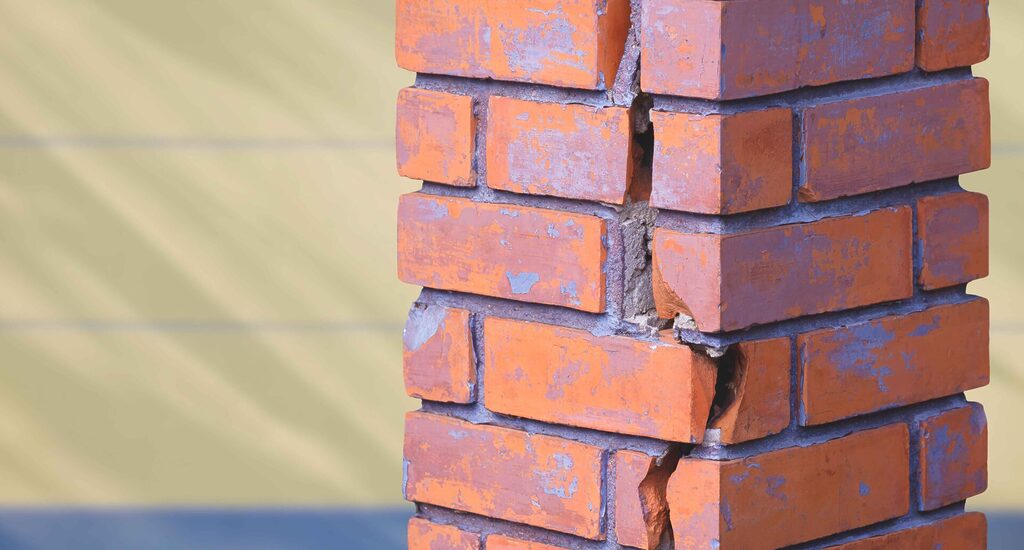
Cracked Chimneys
Chimneys, especially brick ones, can develop cracks over time. The mortar that holds the bricks together can deteriorate and form gaps, which can allow water to seep into your home during heavy rain. Additionally, the chimney cap, which serves to keep rainwater from directly entering into the chimney structure, can also develop cracks or become damaged. This can result in water seeping into the chimney and causing leaks inside the home, or further damaging the mortar and bricks. Proper and regular maintenance of the chimney, including repointing or replacing damaged mortar and ensuring the chimney cap is intact, can help avoid these issues.
Improper Roof Design or Installation
Proper roof design and installation are critical to prevent leaks and ensure the longevity of your roof. If the roof’s slope is inadequate, it may not allow for effective water runoff, causing water to pool and potentially seep through the roof materials. Additionally, if shingles are improperly installed—such as being nailed too high, not properly aligned, or not adequately overlapped—they can leave the underlayment and roof deck vulnerable to water intrusion. Furthermore, the underlayment—essentially a protective layer between the roof deck and the shingles—plays a vital role in preventing water penetration. If it’s improperly installed or if the wrong type of underlayment is used for the specific roof type or local climate, this can also lead to flat roof leaks in heavy rain. Working with a professional, reputable roofing contractor can help avoid these issues, ensuring that the roof design and installation are suitable for your home and environment.
Ice Dams
An ice dam is a ridge of ice that forms at the edge of a roof and prevents melting snow (water) from draining off the roof. The water that backs up behind the dam can leak into a home and cause damage to walls, ceilings, insulation, and other areas. Ice dams are usually caused by uneven roof temperatures. When the upper part of the roof is warmer than the lower part, it can cause the snow at the top to melt. As the water runs down the roof, it hits the colder edge, refreezing and creating a dam. This is often the result of poor insulation and ventilation in the attic. Heat from inside the house escapes into the attic, warming the roof and leading to the uneven roof temperatures that cause the dams. Insulating your attic, sealing places where warm air could leak from the house to the attic, and adding roof and soffit vents to vent cold air into the attic can help to prevent ice dams.

Condensation in the Attic
During periods of heavy rain, the humidity level outside often rises significantly, which can increase the moisture content inside your home as well. If your attic is not properly ventilated, this moisture can accumulate, causing condensation on the underside of the roof and other surfaces. This can be particularly problematic in colder weather when the warm air from your house rises into the colder attic, as the sharp temperature contrast can lead to even more condensation. Over time, this condensation can cause water damage, including mold and mildew growth, rotting wood, and insulation damage, which can mimic the symptoms of a leaking roof. To prevent this issue, it’s important to ensure that your attic is well-ventilated and insulated to maintain a consistent temperature and prevent excess moisture buildup.
Damaged Roof Valleys
Roof valleys are the V-shaped channels where two sloping sections of roof meet. They are designed to guide the water that hits your roof down to the gutters. Because of their function, they are one of the most vulnerable areas of your roof, handling a large volume of water runoff during heavy rain. If the valleys are not properly sealed or if the sealant becomes damaged or eroded over time, water can seep under the shingles and into your home, causing a leak. Moreover, debris buildup in these valleys can hinder water flow, causing it to pool and increase the chance of seepage. Regular roof inspections and maintenance can identify and rectify any issues in these critical areas, such as loose or missing shingles, cracked sealant, and blocked or damaged flashing.
Frequently Asked Questions
Heavy rain tests every part of a roof. When water forces its way past shingles, flashing, or vents, it does more than leave stains on the ceiling—it can weaken framing, encourage mold, and shorten the roof’s life. Below are clear answers to the most common questions homeowners ask after spotting rainwater leaking from the roof.
The safest short-term fix is to limit interior damage until professional help arrives. Place buckets or plastic bins under the drip, then protect nearby furniture with tarps. In the attic, trace the water path upward; press a screwdriver into the lowest sagging drywall to create a drainage hole so water doesn’t spread across the ceiling. If you have access and conditions are calm, lay a 6 mil polyethylene sheet or a peel-and-stick leak patch over the suspect area, tucking the top edge beneath a row of shingles. Never climb a wet roof in a storm—call an emergency roofer instead. This quick response buys time without putting yourself at risk.
A well-installed, well-maintained roof should not leak, even in a downpour. If you notice roof leaking in heavy rain, it signals a failure in the waterproofing system—cracked shingles, missing flashing, torn underlayment, or deteriorated sealant around penetrations. While occasional driving rain may push moisture under a loose shingle, steady dripping means something needs repair. Treat any leak as abnormal and act quickly before water compromises sheathing or insulation.
Water often travels before it appears indoors, so leaks may only show up once the storm passes. Common culprits include:
- Roof vent leaks during heavy rain — gaskets around plumbing stacks or attic vents dry out and crack.
- Backed-up valleys — leaves or debris trap water where two roof planes meet.
- Pinholes in flashing — tiny rust spots near chimneys or skylights widen under wind-driven rain.
- Ice-dam damage (in colder climates) — past freeze-thaw cycles lift shingles, letting rain in later.
Because the point of entry can be several feet uphill from the ceiling stain, a thorough inspection is vital to pinpoint the defect.
Start indoors on a clear day with a strong flashlight. In the attic, look for darkened decking, damp insulation, or sunlight peeking through sheathing. Follow any musty odor; wet wood smells different from dry lumber. Outside, walk the perimeter with binoculars, scanning for curled shingles, exposed nails, or missing granules. Pay special attention to flashing around chimneys, dormers, and sidewalls. If you have safe roof access, run a garden hose low-pressure test: soak one area for several minutes while someone watches inside for drips. Move methodically until the leak shows—it’s a simple yet effective diagnostic.
Interior fixes are temporary but can prevent further damage until exterior repairs are possible. From the attic:
- Locate the entry point. Push aside insulation; look for water trails on the underside of the decking.
- Apply roofing cement. Using a putty knife, press plastic roof cement into small cracks or nail holes.
- Bridge larger gaps. Press a piece of galvanized metal flashing or a shingle scrap into the cement, then coat the edges.
- Seal seams. For long splits, weave a peel-and-stick butyl tape strip along the joint, pressing firmly for full adhesion.
Remember, these patches don’t replace external repairs—they simply redirect water until conditions are dry enough for a permanent solution.
Absolutely. When gutters fill with leaves, water backs up under the shingle edge instead of draining away. Persistent overflow soaks the fascia and the roof deck, leading to deterioration and leaks along the eaves. Regular gutter cleaning—especially before the rainy season—prevents this straightforward but costly problem. Adding gutter guards can also keep debris out while allowing rain to flow freely.
Yes. Moist ceilings and attic insulation create an ideal environment for mold spores, which only need 24–48 hours of moisture to grow. Left unchecked, mold can spread into wall cavities, trigger allergies, and damage drywall. Addressing the leak quickly and thoroughly drying wet materials—often with fans or dehumidifiers—stops colonies from taking hold.
The best long-term fix is a professionally executed exterior repair that addresses both the symptom and the underlying cause. That means:
- Replacing damaged shingles or tiles.
- Resealing flashing around penetrations and sidewalls.
- Installing new underlayment if water intrusion was widespread.
- Inspecting the attic for insulation or structural harm and correcting ventilation so moisture doesn’t accumulate.
If the roof is near the end of its service life, a complete replacement is often more cost-effective than patchwork repairs, especially if multiple areas show wear. Choose quality materials, correct flashing details, and proper attic airflow to keep roof leaking after heavy rain from returning.




